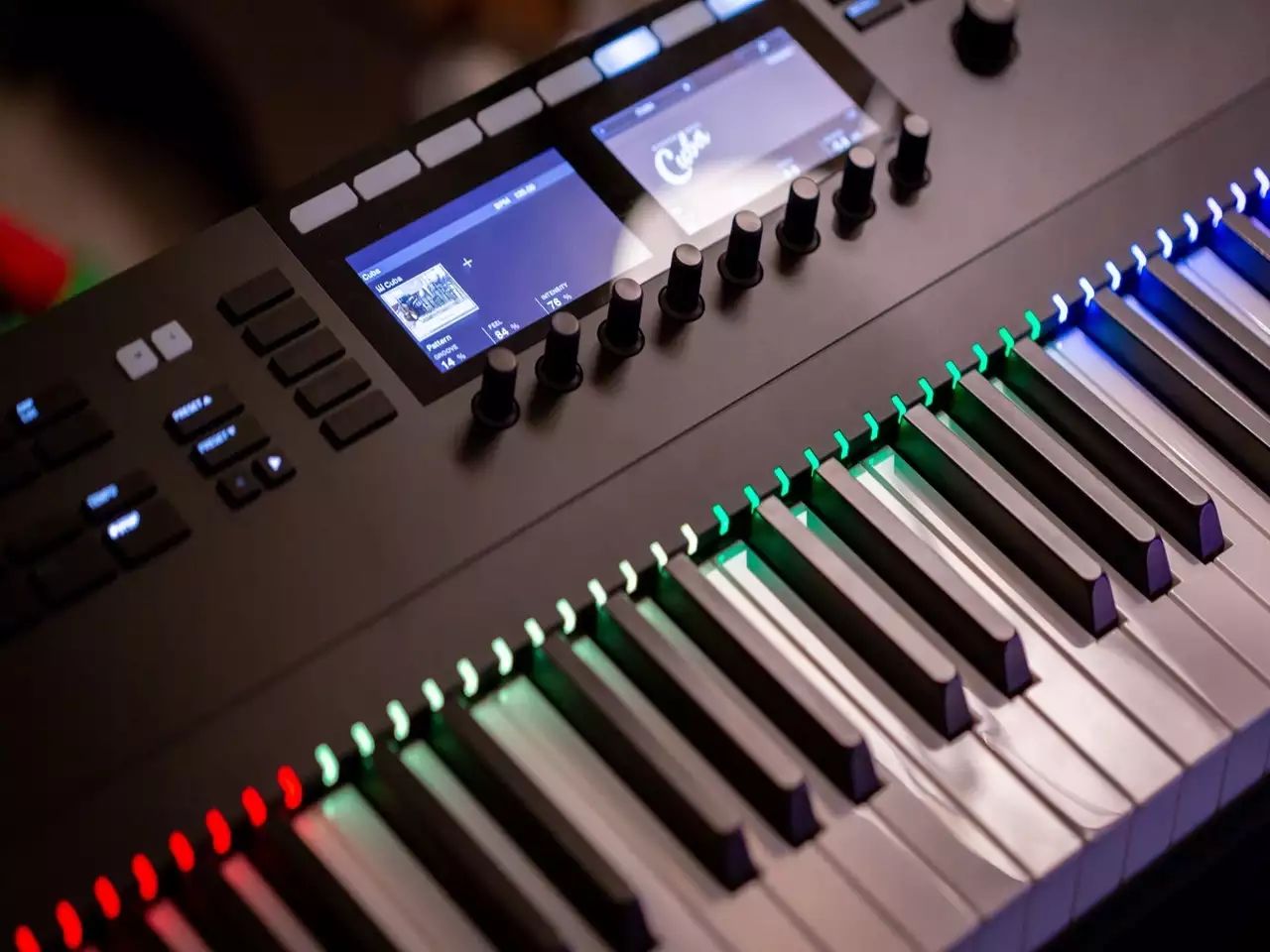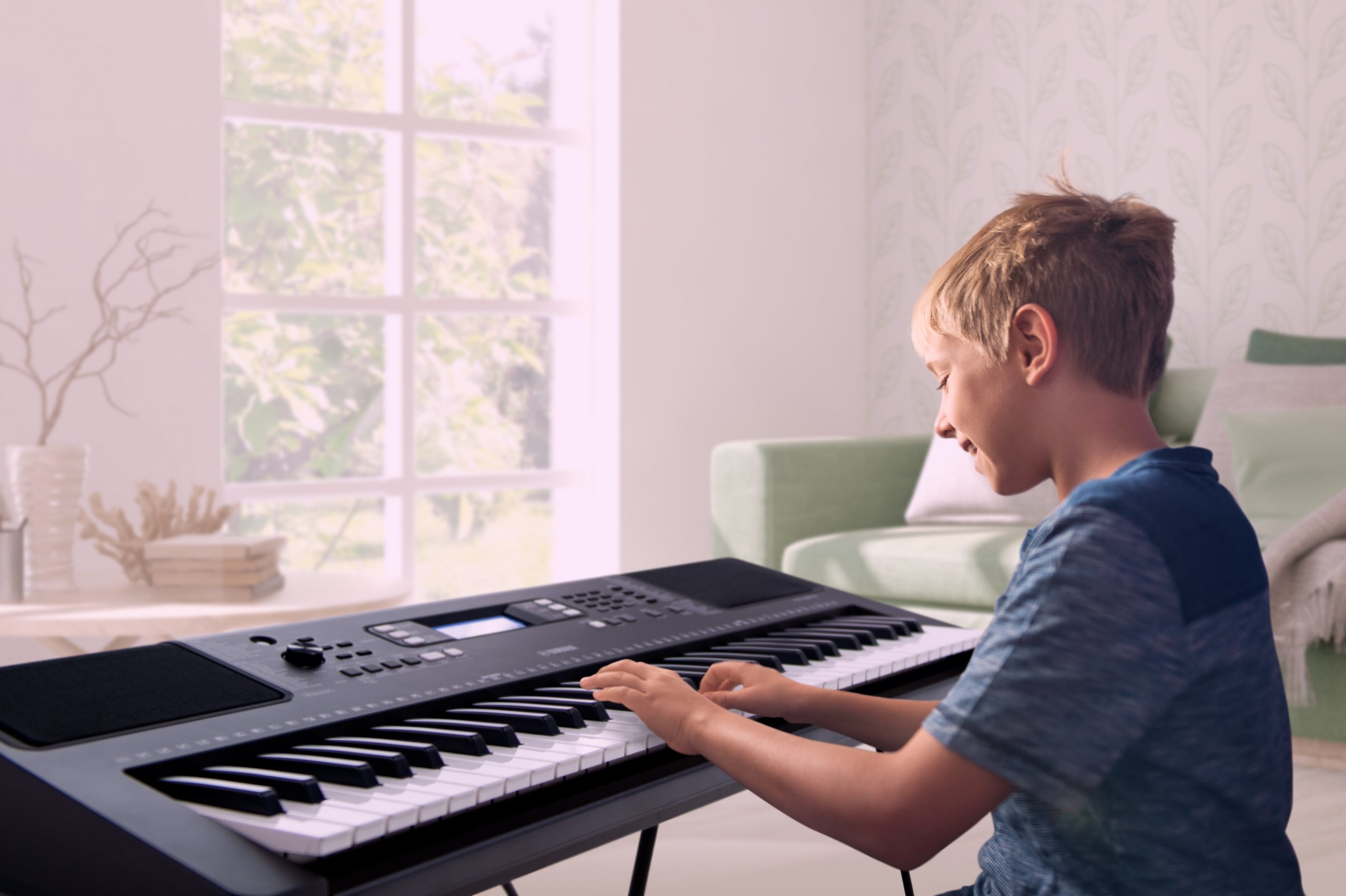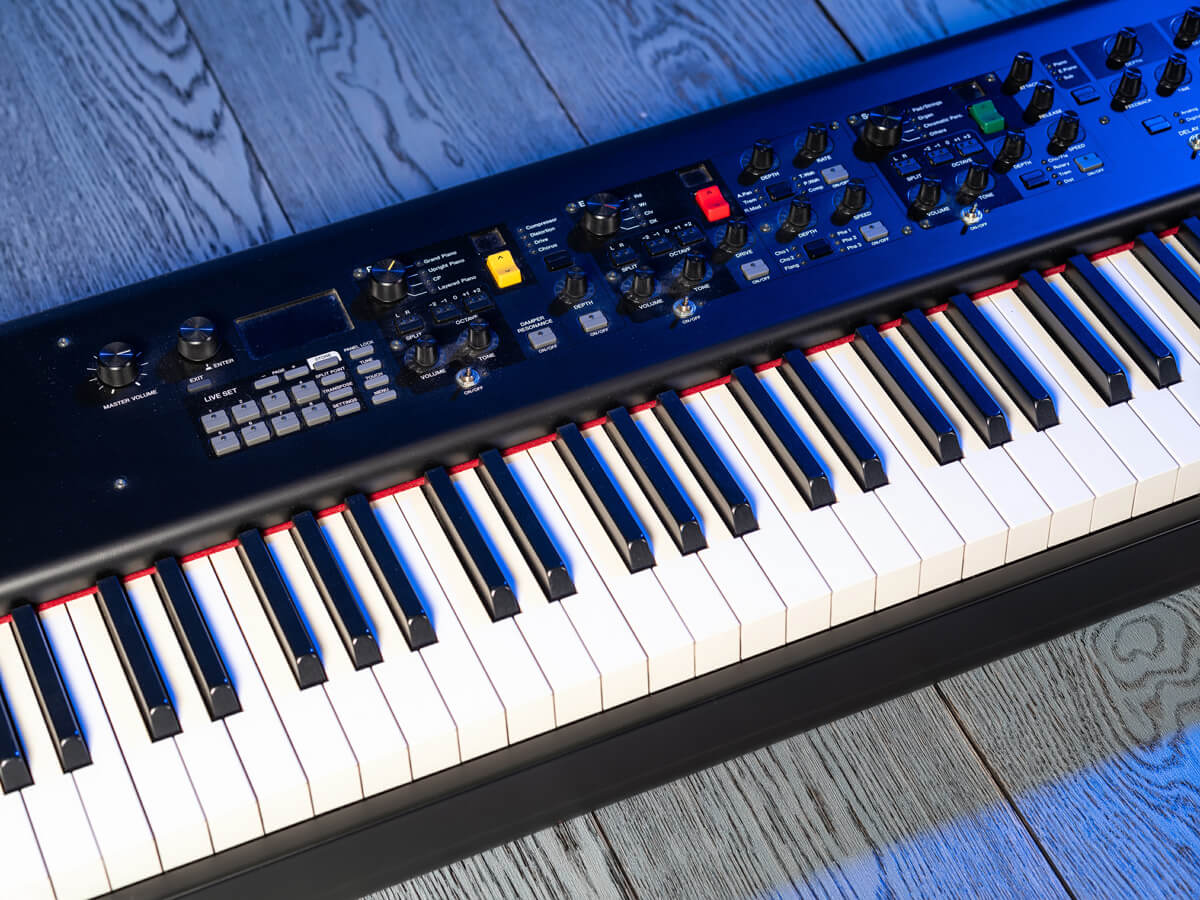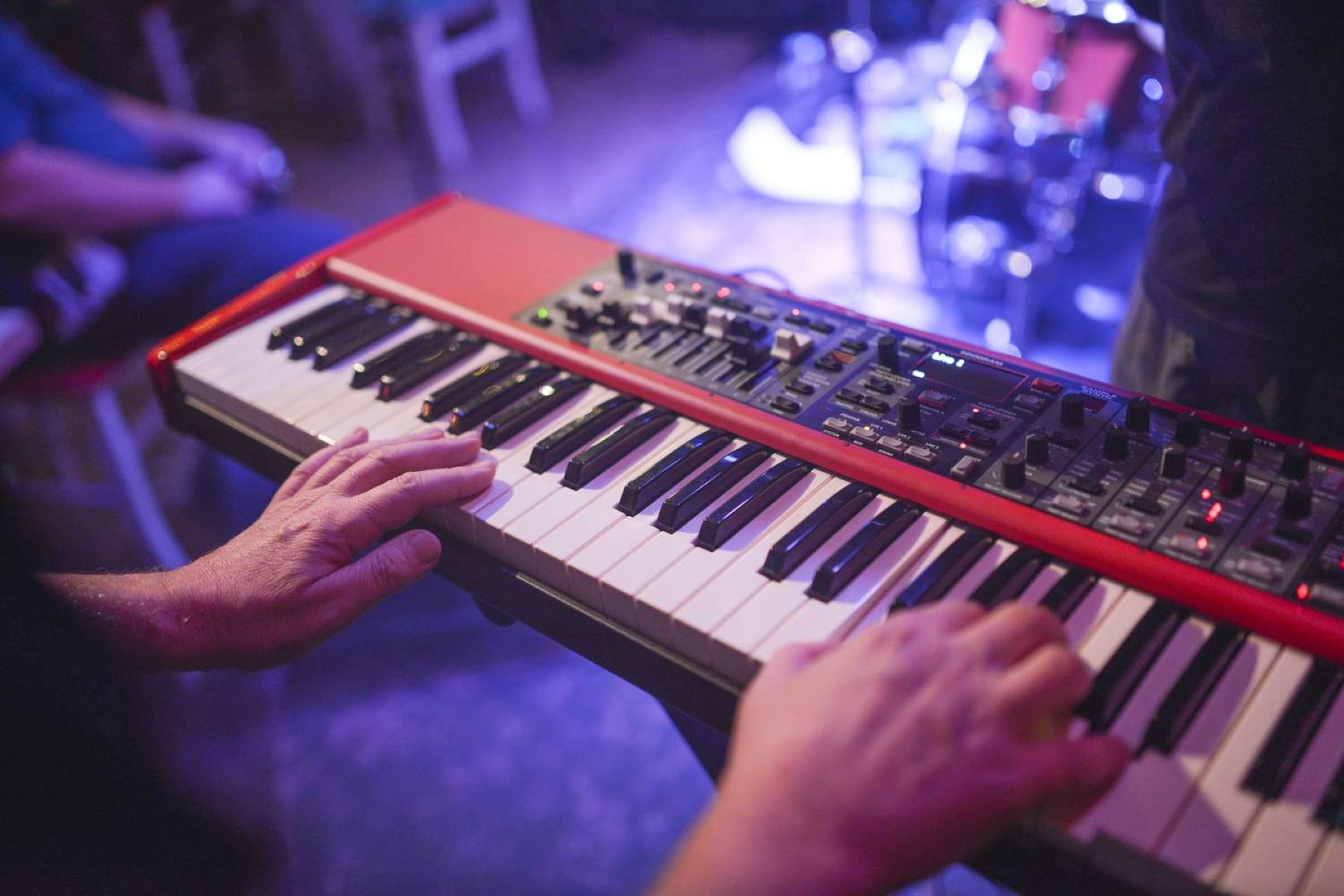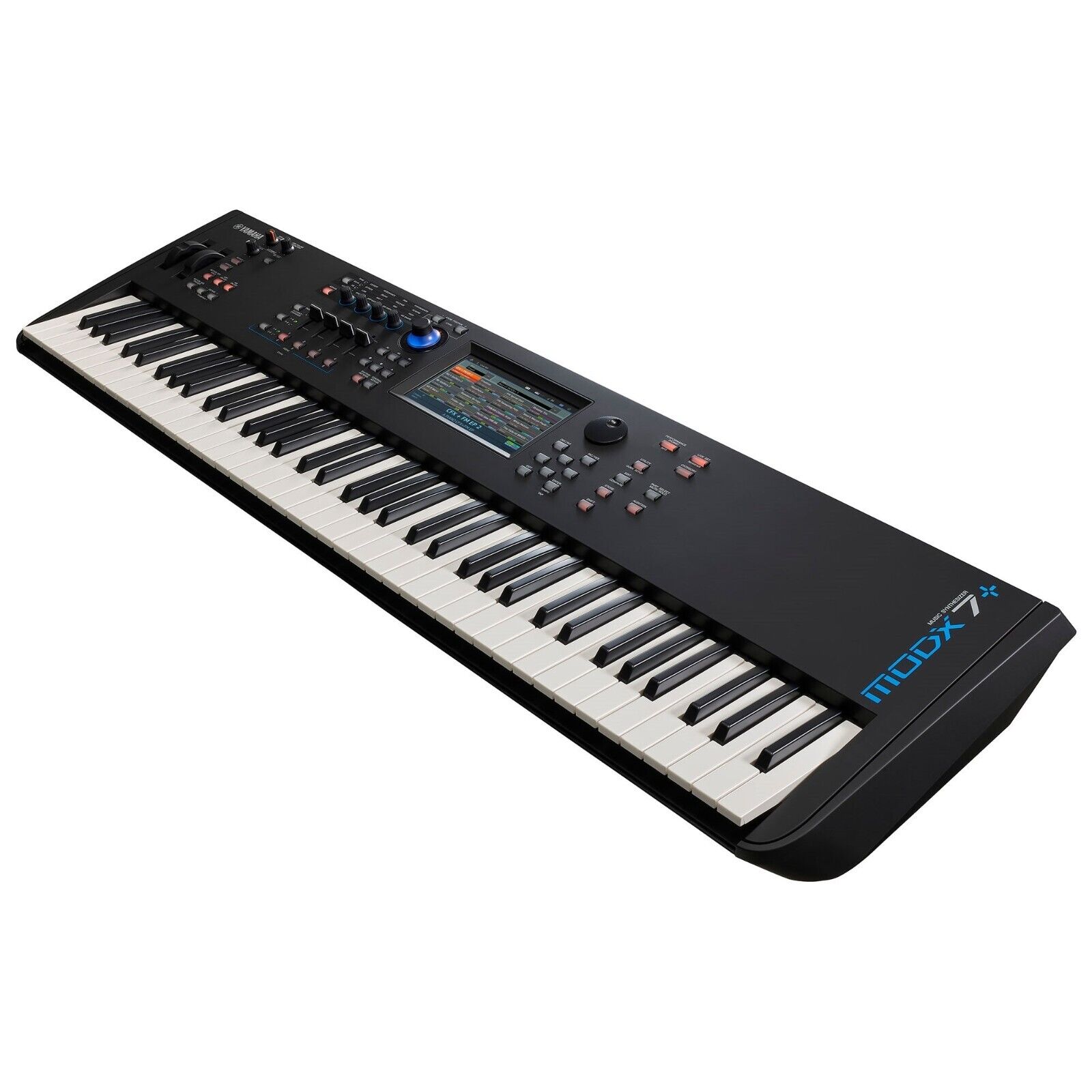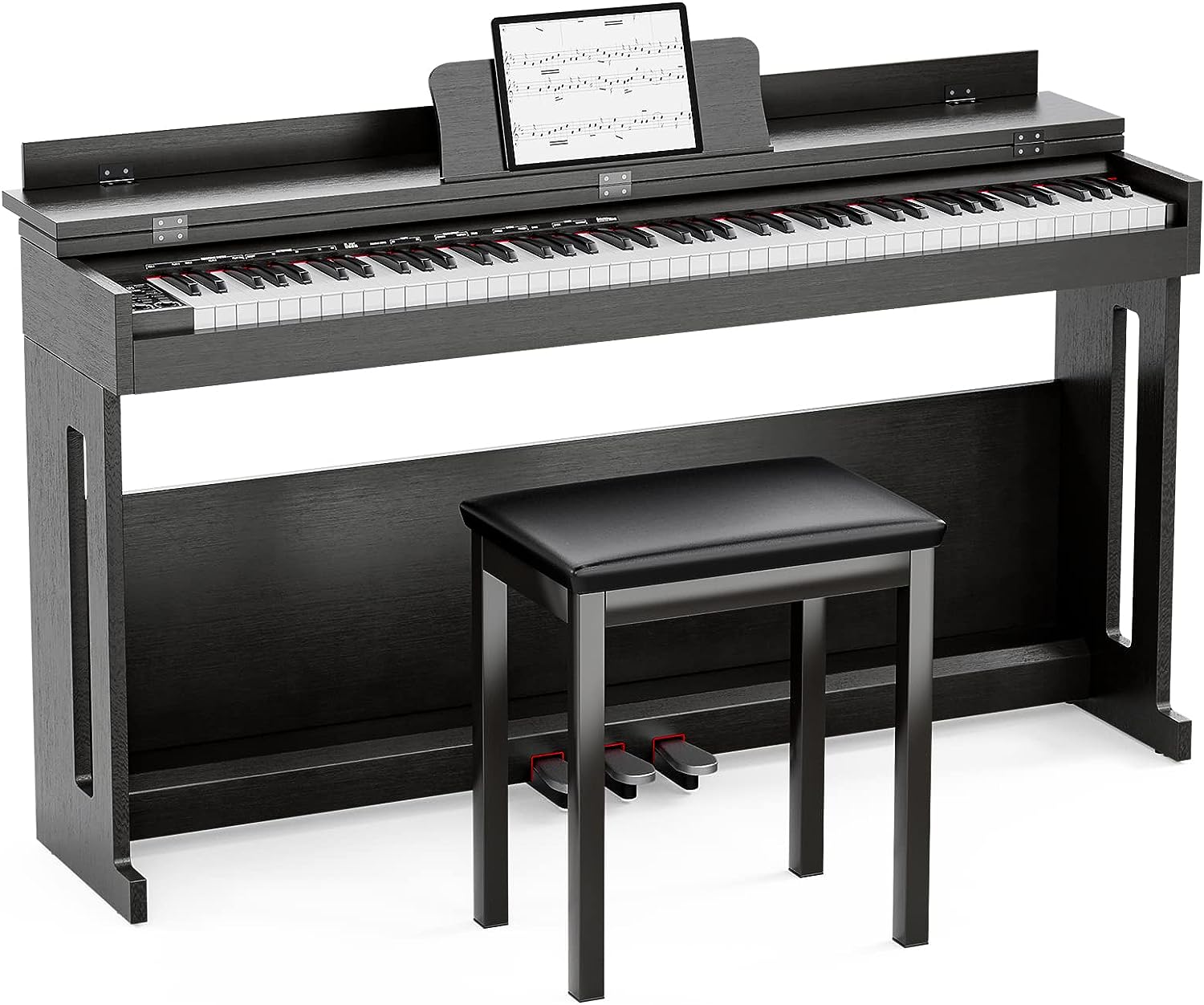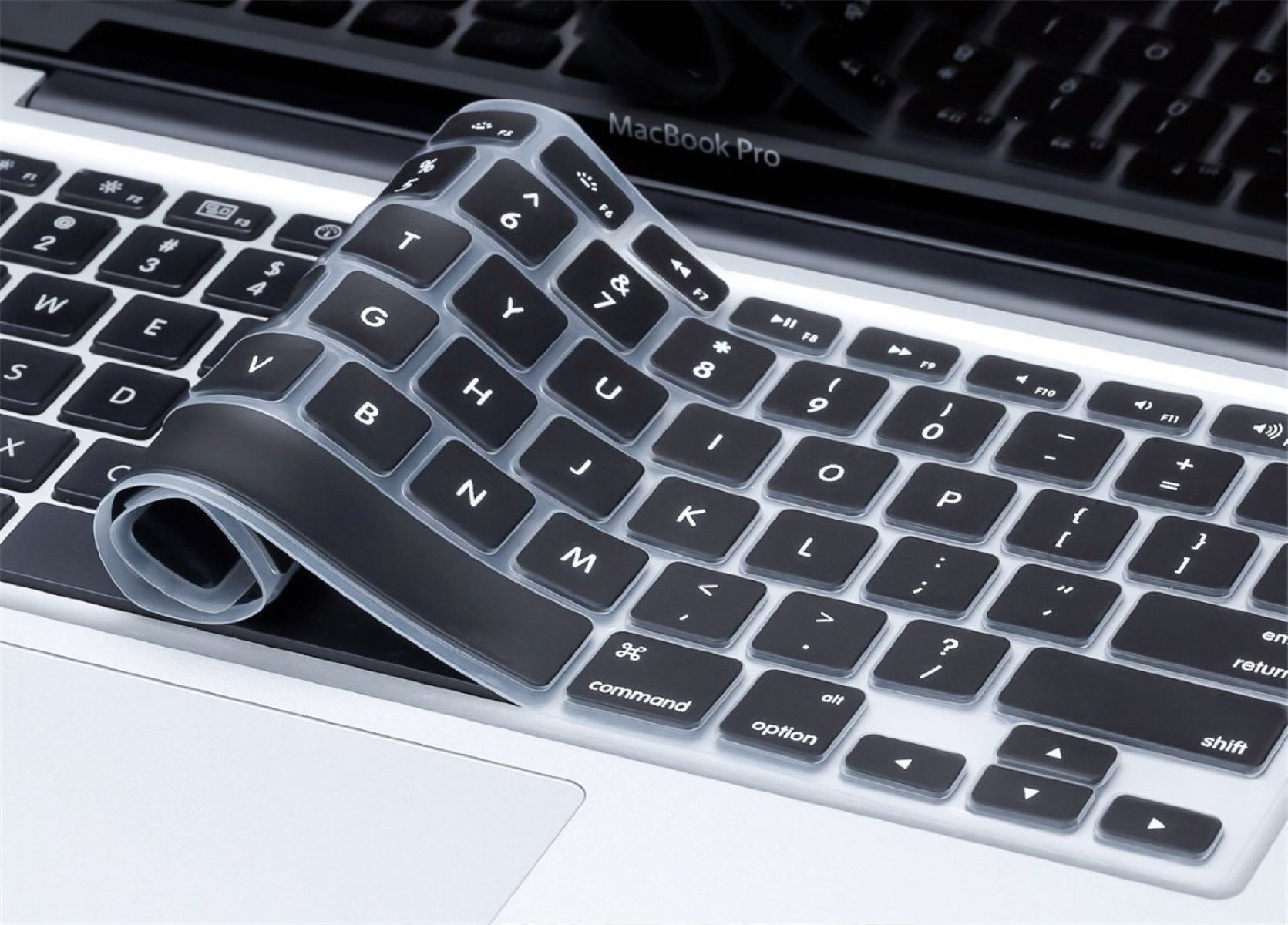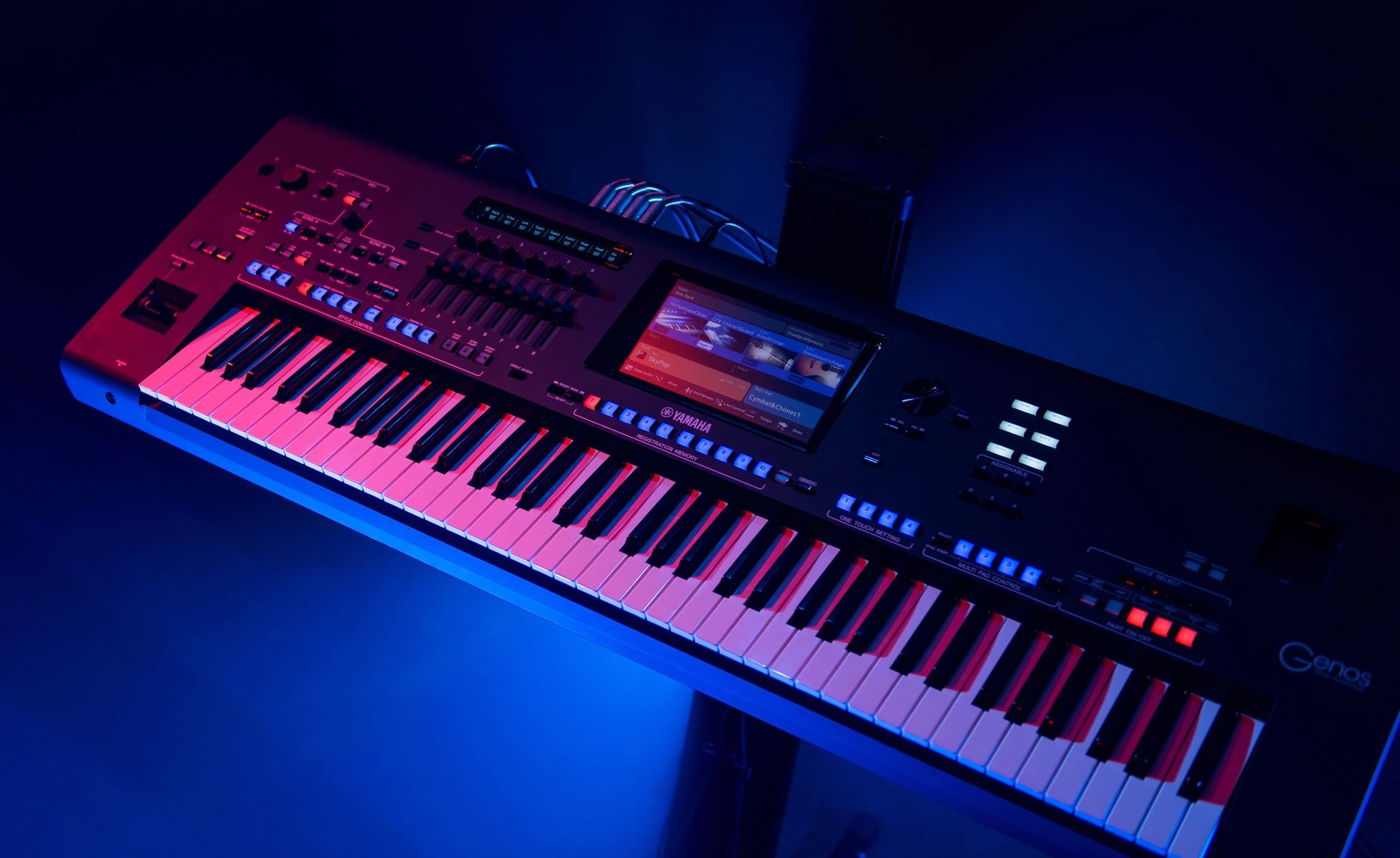Introduction
Welcome to the exciting world of keyboard pianos! Whether you’re a beginner looking to learn the piano or an experienced musician seeking a versatile instrument, finding the right keyboard piano can be a challenging yet rewarding experience. One of the factors you’ll need to consider is the cost.
Keyboard pianos come in various price ranges, and the cost can vary significantly depending on several factors. Understanding these factors will help you make an informed decision and find a keyboard piano that suits your budget and requirements.
In this article, we’ll explore the different factors that influence the price of a keyboard piano and provide insight into the various options available at different price points. So whether you’re looking for an entry-level keyboard, an intermediate-level instrument, or a professional-grade keyboard piano, we’ve got you covered.
Before we delve into the specific price ranges, let’s briefly discuss some of the factors that can affect the cost of a keyboard piano.
Factors Affecting the Cost of a Keyboard Piano
When it comes to the cost of a keyboard piano, several factors play a significant role in determining the price. By understanding these factors, you can make a more informed decision and find a keyboard piano that fits your budget and needs.
1. Number of Keys: The number of keys on a keyboard piano can vary, with the most common options being 61, 76, and 88 keys. Generally, keyboards with more keys tend to be more expensive than those with fewer keys.
2. Key Type: Keyboards pianos can have different types of keys, such as weighted keys, semi-weighted keys, or synth-action keys. Weighted keys, which simulate the feel of an acoustic piano, are often found in higher-priced models.
3. Touch Sensitivity: Keyboard pianos with touch sensitivity can detect the intensity of your playing and produce varying levels of sound. Models with adjustable touch sensitivity are usually priced higher than those without this feature.
4. Sound Quality: The sound quality of a keyboard piano depends on the built-in sound samples and the quality of the speakers. Higher-priced models often feature more realistic and dynamic sound samples, resulting in a more authentic piano playing experience.
5. Polyphony: Polyphony refers to the number of notes a keyboard can produce simultaneously. Entry-level keyboards typically have lower polyphony (around 32 to 64 notes), while professional-grade models offer higher polyphony (128 or more notes).
6. Extra Features: Some keyboard pianos come with additional features like built-in effects, recording capabilities, USB connectivity, and learning tools. These extra features can contribute to a higher price tag.
7. Brand and Reputation: The brand reputation and perceived quality of a keyboard piano can also impact its cost. Well-established brands with a strong track record in the industry often have higher-priced models.
Keep in mind that while these factors are important, they don’t always guarantee a better playing experience. It’s essential to consider your skill level, musical goals, and personal preferences when choosing a keyboard piano.
Now that we’ve explored the factors affecting the cost of a keyboard piano, let’s move on to the different price ranges and options available for each level of player.
Entry-Level Keyboards
Entry-level keyboards are perfect for beginners who are just starting their musical journey or casual players looking for a budget-friendly option. These keyboards typically offer basic features and functionality at an affordable price point.
Entry-level keyboards usually have 61 keys, which is sufficient for learning and playing a wide range of songs. They are often lightweight and portable, making them easy to transport and store.
In terms of key type, entry-level keyboards generally have synth-action keys or semi-weighted keys. While they may lack the realistic feel of weighted keys, they are still suitable for learning and practicing.
Sound quality on entry-level keyboards can vary, but most models offer a decent selection of sounds and tones to get you started. However, don’t expect the same level of depth and realism as higher-end models.
Polyphony on entry-level keyboards is typically in the range of 32 to 64 notes. While this may limit the number of sustained notes you can play, it’s still sufficient for beginners and basic compositions.
Extra features on entry-level keyboards are usually limited but can include features like built-in speakers, headphone jack, basic recording capabilities, and some built-in effects.
When it comes to price, entry-level keyboards can range from around $100 to $300. The specific price will depend on factors such as brand, build quality, and additional features.
Popular models in this price range include the Yamaha PSR-E363, Casio CTK-3500, and Roland GO:KEYS. These keyboards offer good value for money and are ideal for beginners or those on a tight budget.
Overall, entry-level keyboards provide an affordable way to get started on your musical journey. While they may lack some advanced features and high-end sound quality, they offer a solid foundation for learning and developing your piano skills.
Next, let’s explore the options available for intermediate-level players who want to take their keyboard piano playing to the next level.
Intermediate-Level Keyboards
Intermediate-level keyboards are designed for players who have progressed beyond the beginner stage and are looking for more advanced features and capabilities. These keyboards offer a balance between affordability and performance, making them ideal for intermediate players and aspiring musicians.
Intermediate-level keyboards often come with more keys, typically ranging from 76 to 88 keys. This expanded range allows for a wider range of playing and greater versatility in exploring different musical genres.
Key type becomes an important consideration for intermediate players. Many keyboards in this category feature semi-weighted keys or fully weighted keys, providing a more authentic piano playing experience. The weighted keys mimic the feel of an acoustic piano, making it easier to transition to playing on a traditional piano.
Sound quality is generally improved in intermediate-level keyboards, with more accurate and detailed samples. These keyboards often include a more extensive library of sounds and tones, allowing players to experiment with different instrument sounds and create more elaborate compositions.
Polyphony in intermediate-level keyboards is typically higher, ranging from 64 to 128 notes or more. This increased polyphony enhances the playing experience by allowing for more complex and layered musical arrangements.
When it comes to extra features, intermediate-level keyboards offer more advanced functionalities. These may include built-in effects, sequencers, advanced recording capabilities, USB connectivity, and the ability to connect to external devices such as computers or MIDI controllers.
The price of intermediate-level keyboards can range from around $300 to $1000, depending on the brand, features, and overall quality. Popular models in this category include the Yamaha P-125, Korg Kross 2, and Roland Juno-DS88.
Intermediate-level keyboards are perfect for players who have developed their skills and want to explore a wider range of musical possibilities. These keyboards offer enhanced features and improved sound quality, making them a valuable investment for serious musicians.
Now, let’s move on to the highest level of keyboard pianos – the professional-grade models.
Professional Keyboards
Professional keyboards are the pinnacle of performance and versatility, catering to the needs of advanced players, professional musicians, and studio producers. These keyboards offer top-tier features, exceptional sound quality, and unparalleled control over your musical expression.
One of the distinguishing features of professional keyboards is their extended range of 88 keys. These keyboards are designed to replicate the feel and response of a traditional acoustic piano, with fully weighted keys that provide a realistic playing experience. They are often equipped with hammer action keys, which simulate the weighted action found in acoustic pianos.
Sound quality in professional keyboards is the highest among all categories. These keyboards feature advanced sound engines and sampled instrument libraries, accurately reproducing the nuances and subtleties of various instruments. The extensive range of tones and articulations available allows professional players to achieve precise and expressive performances.
Polyphony in professional keyboards is typically in the range of 128 to 256 notes or even higher. This high polyphony ensures that every note can be played and sustained without any loss of sound quality, even in complex compositions with multiple layers.
Professional keyboards often come packed with a wide array of additional features and customization options. They may include advanced effects processors, extensive sequencing capabilities, comprehensive recording capabilities, multiple connectivity options, and the ability to expand and integrate with external instruments and equipment. These features provide professional musicians with the tools they need to create and perform at the highest level.
The price range for professional keyboards can vary significantly, depending on the brand, features, and overall quality. They can range from around $1000 to several thousand dollars. Popular models in this category include the Nord Stage 3, Korg Kronos, and Yamaha Montage.
Professional keyboards represent the pinnacle of performance and are the go-to choice for serious musicians and professionals. They provide unmatched control, sound quality, and versatility to help musicians fully express their creativity and deliver exceptional performances.
Now that we’ve explored the different levels of keyboard pianos, it’s important to consider the differences between digital pianos and keyboard workstations in terms of price and functionality. Let’s dive into that comparison next.
Digital Pianos vs. Keyboard Workstations: Price Comparison
When it comes to choosing a keyboard piano, you may come across two popular options: digital pianos and keyboard workstations. While both offer advanced features and high-quality sounds, their functionalities and price points differ.
Digital Pianos: Digital pianos are designed to replicate the sound and feel of an acoustic piano as closely as possible. They typically prioritize authentic piano sounds and realistic key action. Digital pianos often have a streamlined design and focus on providing a pure piano playing experience.
The price range for digital pianos varies depending on factors such as brand, key action, sound quality, and additional features. Entry-level digital pianos can range from around $500 to $1,500, while professional-grade models can go up to several thousand dollars.
Keyboard Workstations: Keyboard workstations, on the other hand, are more versatile and offer a wider range of features. They are designed to be all-in-one music production tools, combining the functionality of a keyboard, synthesizer, sampler, and sequencer in a single unit. Keyboard workstations are popular among professional composers, producers, and live performers who require extensive control over their sound and want to create complex musical arrangements.
The price range for keyboard workstations can be significantly higher than digital pianos due to their advanced features and capabilities. Entry-level keyboard workstations may start at around $1,000, while high-end models can exceed several thousand dollars.
It’s important to note that the price difference between digital pianos and keyboard workstations doesn’t necessarily reflect the quality or performance. It’s about the specific features, functionalities, and level of customization they offer.
Ultimately, the choice between a digital piano and a keyboard workstation will depend on your musical goals and requirements. If you primarily want a piano-focused instrument and value authentic piano sound and key action, a digital piano may be the better option. On the other hand, if you need a versatile instrument with a wide range of sounds and advanced production capabilities, a keyboard workstation is worth considering.
Now that you have a better understanding of the price ranges and options for digital pianos and keyboard workstations, let’s move on to some buying tips to help you make an informed decision.
Buying Tips for a Keyboard Piano
When it comes to buying a keyboard piano, it’s essential to consider several factors to ensure you make the right decision. Here are some helpful tips to guide you in your purchase:
1. Consider your Skill Level: Assess your skill level and musical goals. If you’re a beginner, an entry-level keyboard will suffice. Intermediate and advanced players may benefit from more advanced features and customization options.
2. Set a Budget: Determine your budget range and stick to it. Remember to consider additional expenses such as accessories, stands, and amplification if necessary.
3. Test the Key Action: Try out different keyboards to find the key action that suits your playing style. Consider if you prefer weighted, semi-weighted, or synth-action keys.
4. Listen to the Sound Quality: Pay attention to the sound quality and selection of tones. Ensure that the keyboard produces the sounds you desire and that they are of high quality and realism.
5. Consider Polyphony: Decide on the appropriate polyphony for your needs. While 64-note polyphony may be sufficient for most players, advanced compositions may require higher polyphony.
6. Review Extra Features: Evaluate the additional features offered by the keyboard, such as built-in effects, recording capabilities, connectivity options, and learning tools. Consider which features are essential to you.
7. Research Brands and Reviews: Explore different brands and models, read reviews, and seek recommendations from musicians or music experts. This will help you make an informed decision based on the reputation and quality of the brand.
8. Try Before You Buy: Whenever possible, try out the keyboard piano in person before making a purchase. This will give you a feel for the instrument and ensure it meets your expectations.
9. Consider Long-Term Use: Think about your long-term goals and how the keyboard piano may fit into those plans. Consider if you may outgrow an entry-level keyboard and if investing in a higher-quality instrument is beneficial for your musical journey.
10. Check for Warranty and Support: Verify the warranty coverage and after-sales support offered by the manufacturer or retailer. A reliable warranty and good customer support can provide peace of mind and assistance when needed.
By following these buying tips, you can narrow down your options and find the perfect keyboard piano that suits your needs, preferences, and budget.
Now that you are equipped with buying tips, let’s summarize the information we’ve explored throughout this article.
Conclusion
Choosing the right keyboard piano is a crucial decision for anyone interested in playing or learning the instrument. By considering factors such as key type, sound quality, extra features, and brand reputation, you can make an informed decision that fits your budget and musical goals.
Entry-level keyboards provide an affordable option for beginners or those on a tight budget. They offer basic features and functionality to get you started on your musical journey.
Intermediate-level keyboards cater to players who have progressed beyond the beginner stage and are looking for more advanced features and capabilities. These keyboards strike a balance between affordability and performance.
Professional keyboards represent the pinnacle of performance and versatility. They offer top-tier features, exceptional sound quality, and unparalleled control over your musical expression, making them the go-to choice for advanced players and professionals.
When deciding between a digital piano and a keyboard workstation, consider your specific needs and preferences. Digital pianos focus on authentic piano sound and key action, while keyboard workstations offer a wide range of features and production capabilities.
Finally, when embarking on your purchase, keep in mind some essential buying tips, such as considering your skill level, setting a budget, testing the key action and sound quality, and researching brands and reviews.
By taking these factors into account and following the recommended guidelines, you can confidently choose a keyboard piano that will bring you joy and inspiration as you embark on your musical journey.
Happy playing!







